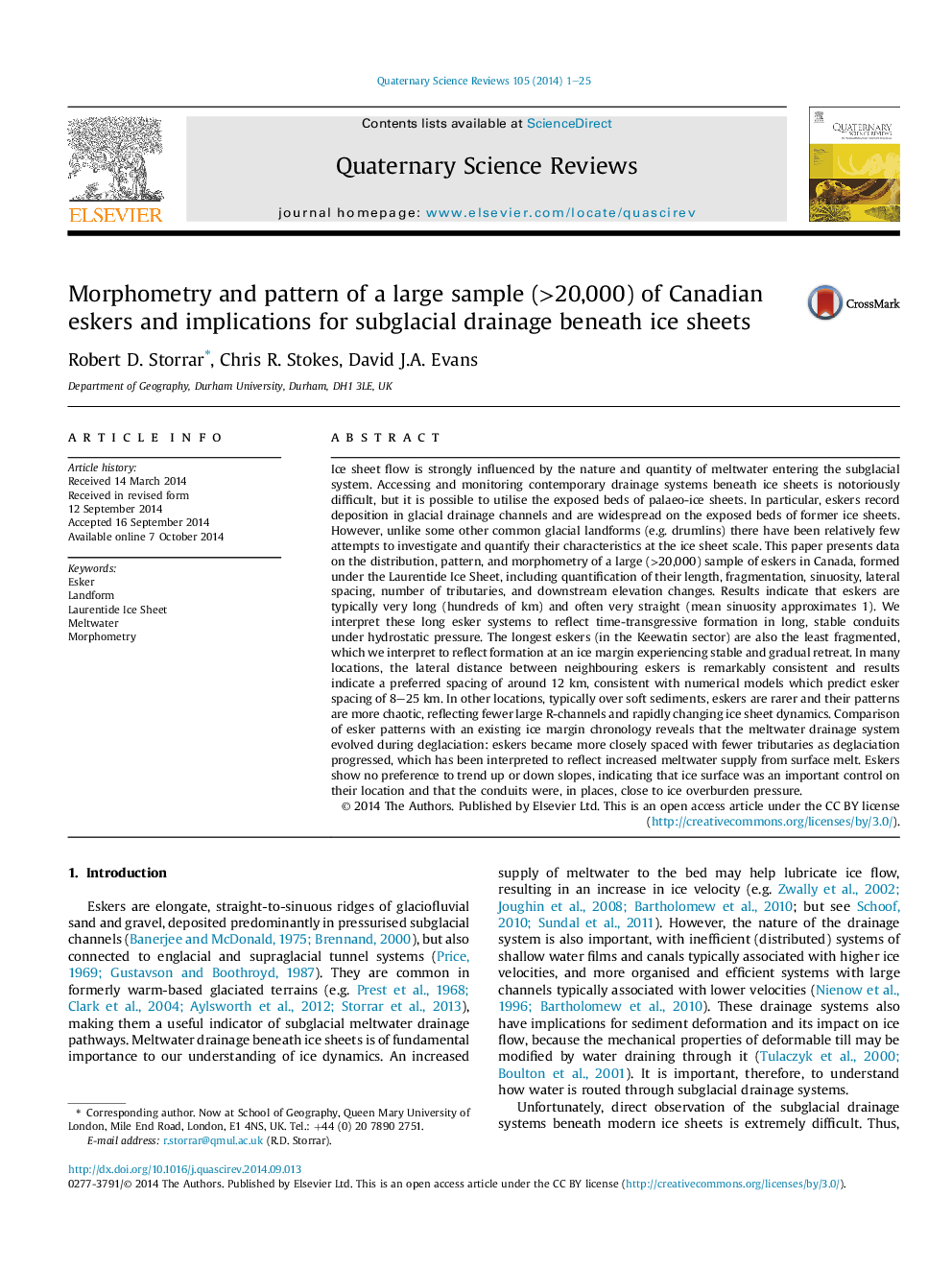| کد مقاله | کد نشریه | سال انتشار | مقاله انگلیسی | نسخه تمام متن |
|---|---|---|---|---|
| 6446106 | 1640829 | 2014 | 25 صفحه PDF | دانلود رایگان |
عنوان انگلیسی مقاله ISI
Morphometry and pattern of a large sample (>20,000) of Canadian eskers and implications for subglacial drainage beneath ice sheets
ترجمه فارسی عنوان
مورفومتری و الگوی یک نمونه بزرگ (> 20،000) اسکادران کانادایی و پیامدهای آن برای تخلیه زیر گلادیاتورهای زیر ورقه یخ
دانلود مقاله + سفارش ترجمه
دانلود مقاله ISI انگلیسی
رایگان برای ایرانیان
کلمات کلیدی
موضوعات مرتبط
مهندسی و علوم پایه
علوم زمین و سیارات
زمین شناسی
چکیده انگلیسی
Ice sheet flow is strongly influenced by the nature and quantity of meltwater entering the subglacial system. Accessing and monitoring contemporary drainage systems beneath ice sheets is notoriously difficult, but it is possible to utilise the exposed beds of palaeo-ice sheets. In particular, eskers record deposition in glacial drainage channels and are widespread on the exposed beds of former ice sheets. However, unlike some other common glacial landforms (e.g. drumlins) there have been relatively few attempts to investigate and quantify their characteristics at the ice sheet scale. This paper presents data on the distribution, pattern, and morphometry of a large (>20,000) sample of eskers in Canada, formed under the Laurentide Ice Sheet, including quantification of their length, fragmentation, sinuosity, lateral spacing, number of tributaries, and downstream elevation changes. Results indicate that eskers are typically very long (hundreds of km) and often very straight (mean sinuosity approximates 1). We interpret these long esker systems to reflect time-transgressive formation in long, stable conduits under hydrostatic pressure. The longest eskers (in the Keewatin sector) are also the least fragmented, which we interpret to reflect formation at an ice margin experiencing stable and gradual retreat. In many locations, the lateral distance between neighbouring eskers is remarkably consistent and results indicate a preferred spacing of around 12 km, consistent with numerical models which predict esker spacing of 8-25 km. In other locations, typically over soft sediments, eskers are rarer and their patterns are more chaotic, reflecting fewer large R-channels and rapidly changing ice sheet dynamics. Comparison of esker patterns with an existing ice margin chronology reveals that the meltwater drainage system evolved during deglaciation: eskers became more closely spaced with fewer tributaries as deglaciation progressed, which has been interpreted to reflect increased meltwater supply from surface melt. Eskers show no preference to trend up or down slopes, indicating that ice surface was an important control on their location and that the conduits were, in places, close to ice overburden pressure.
ناشر
Database: Elsevier - ScienceDirect (ساینس دایرکت)
Journal: Quaternary Science Reviews - Volume 105, 1 December 2014, Pages 1-25
Journal: Quaternary Science Reviews - Volume 105, 1 December 2014, Pages 1-25
نویسندگان
Robert D. Storrar, Chris R. Stokes, David J.A. Evans,
